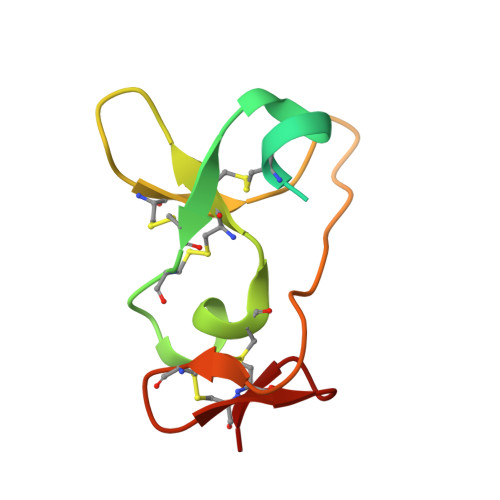Membrane-proximal domain of a disintegrin and metalloprotease-17 represents the putative molecular switch of its shedding activity operated by protein-disulfide isomerase.
Dusterhoft, S., Jung, S., Hung, C.W., Tholey, A., Sonnichsen, F.D., Grotzinger, J., Lorenzen, I.(2013) J Am Chem Soc 135: 5776-5781
- PubMed: 23521534
- DOI: https://doi.org/10.1021/ja400340u
- Primary Citation of Related Structures:
2M2F - PubMed Abstract:
A disintegrin and metalloprotease-17 (ADAM17) is a major sheddase responsible for the regulation of a wide range of biological processes, like cellular differentiation, regeneration, or cancer progression. Hitherto, the mechanism regulating the enzymatic activity of ADAM17 is poorly understood. Recently, protein-disulfide isomerase (PDI) was shown to interact with ADAM17 and to down-regulate its enzymatic activity. Here we demonstrate by NMR spectroscopy and tandem-mass spectrometry that PDI directly interacts with the membrane-proximal domain (MPD), a domain of ADAM17 involved in its dimerization and substrate recognition. PDI catalyzes an isomerization of disulfide bridges within the thioredoxin motif C600XXC603 of the MPD and results in a drastic structural change between an active open state and an inactive closed conformation. This conformational change of the MPD putatively acts as a molecular switch, facilitating a global reorientation of the extracellular domains in ADAM17 and regulating its shedding activity.
- Institute of Biochemistry, Christian-Albrechts-Universität zu Kiel, Olshausenstr. 40, 24098 Kiel, Germany.
Organizational Affiliation:
















